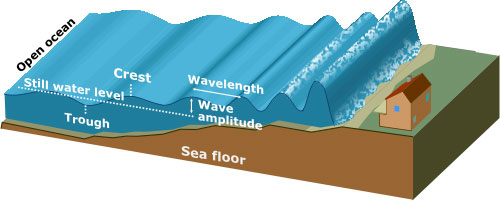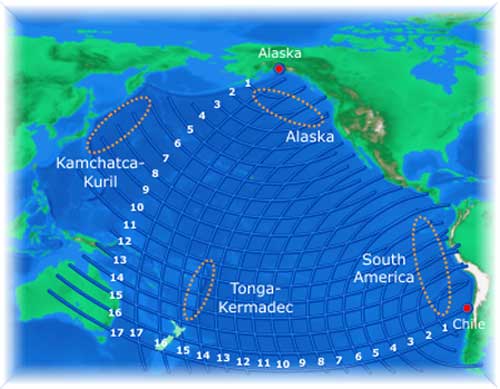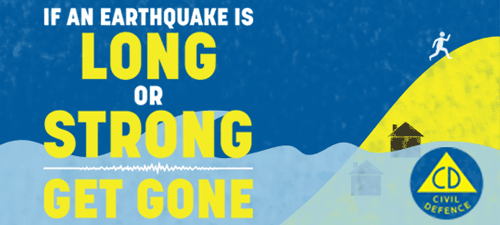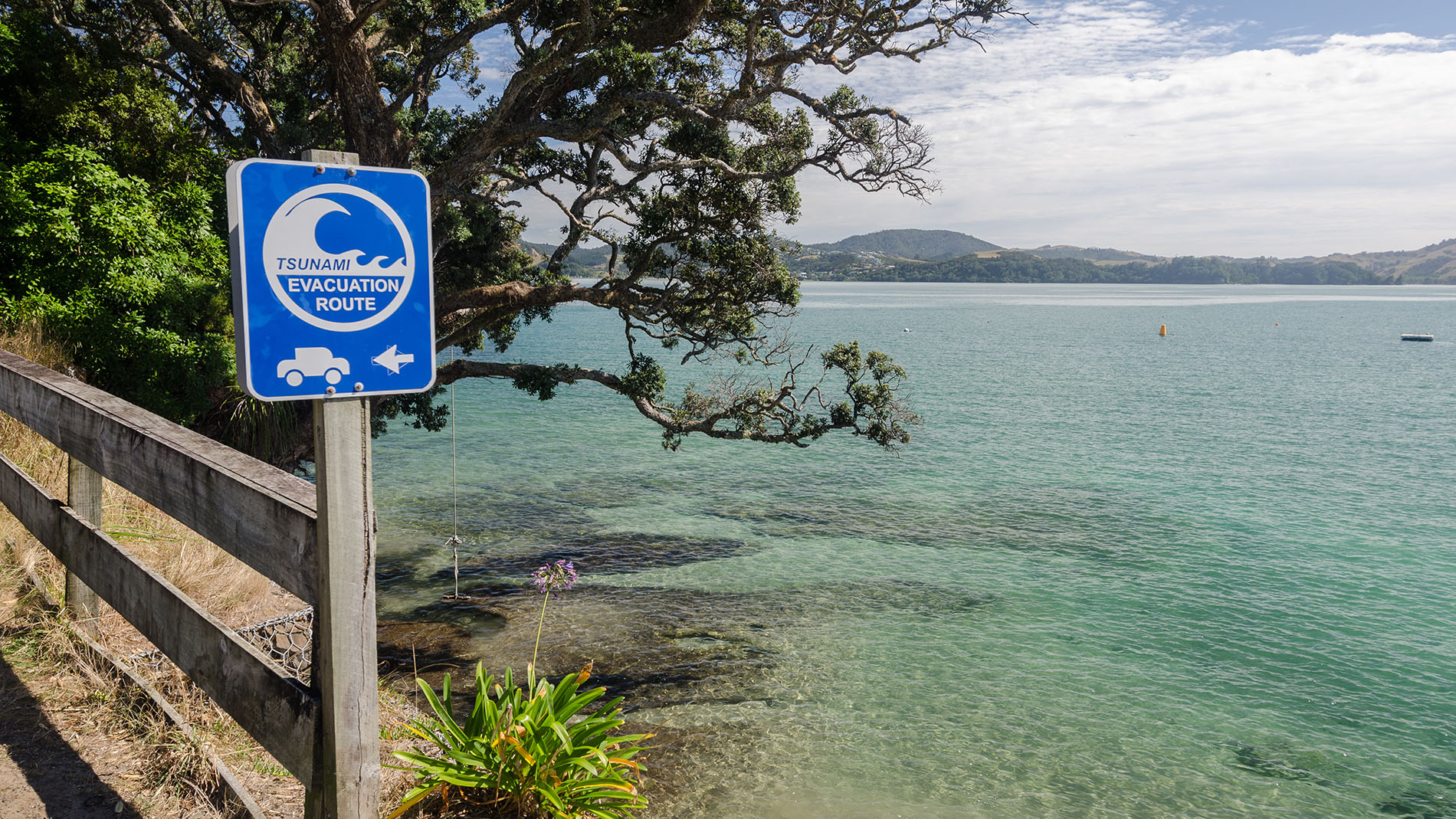Tsunami inundation and safe zones are available for you to view on the Waikato Regional Hazards Portal.
A tsunami is made up of a series of ocean waves of extremely long wavelength. They can be small or very large, and have warning times of less than an hour or up to 14 hours or more. Tsunami are triggered by large disturbances of the ocean such as earthquakes, volcanic eruptions or landslides (either under or into the sea).
Tsunami are a threat to people and property in coastal and low-lying estuarine areas. A tsunami wave can grow to become a fast-moving wall of water, picking up debris as it goes, and can quickly destroy homes and communities. Tsunami waves can also travel inland along river beds as continuous single standing waves, which puts inland communities at risk.
Figure 1 below shows the amplitude, trough and crest of a tsunami wave in relation to the sea floor and still water level. Note how the wave shape changes and the height increases as it approaches the coastline.

Figure 1: Change in tsunami wave shape and height as it approaches land.
Climate change is not expected to affect how often tsunami occur. However, projected sea level rise may allow tsunami waves to travel further inland, increasing the area at risk.
Tsunami types
Near source tsunami
- Local: travel time between the source (such as an earthquake on a fault line just offshore) and impact at the coastline is 1 hour or less.
- Regional: travel time between the source and impact is between 1 and 3 hours.
The short warning time of near source tsunami makes it difficult to evacuate people to safe areas in time. There will often not be time for an official warning, thus people will need to self-evacuate.
Distance source tsunami
Travel time between the source (such as an earthquake near South America or Japan) and impact is greater than 3 hours
Figure 2 below shows the travel-time in hours for a tsunami originating either from Alaska or Chile.

Figure 2: Tsunami source areas and travel-times (hours)
Tsunami hazard areas in the Waikato region
Tsunami may affect all coastal communities within the Waikato region. However, the hazard is greater for some areas than others.
We have carried out tsunami modelling for the Coromandel Peninsula and Firth of Thames, and a preliminary investigation for the west coast of the Waikato Region. These studies show that:
- The tsunami hazard for many communities on the eastern Coromandel is high.
- The tsunami hazard for the western Coromandel and Firth of Thames is lower, but could still be significant, particularly for communities further north.
- The tsunami hazard for the west coast is relatively low.
See the links at the bottom of this page for more information on our tsunami hazard modelling and investigations.
Tsunami evacuation
Know the natural warning signs and take action
For a local source tsunami, there won’t be time for an official warning. It is important to recognise the natural warning signs and act quickly.
If you are near a shore and experience any of the following, take action. Do not wait for official warnings.
- Feel a strong earthquake that makes it hard to stand or a long earthquake that lasts more than a minute
- See a sudden rise or fall in sea level
- Hear loud or unusual noises from the sea
Drop, Cover and Hold during the shaking. As soon as the shaking stops, move immediately to the nearest high ground, out of all tsunami evacuation zones, or as far inland as you can.
Remember, Long or Strong, Get Gone.
For more information on tsunami evacuation, including Community Response Plans, please contact your local district/city council and ask to speak to the Emergency Management staff.






To ask for help or report a problem, contact us
Tell us how we can improve the information on this page. (optional)